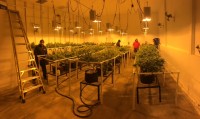A Little About 280E
The 280E statute bans businesses from deducting business expenses for gross income associated with the trafficking of Schedule I or II substances. While other businesses can deduct any number of expenses when filing their taxes — employee salaries, rent, equipment, electricity, etc. — 280E limits cannabis companies to only expensing deductions directly related to earning a profit, or the cost of goods sold (COGs).
For example, a dispensary whose square footage is split between 60% sales floor and 40% lobby may only deduct 60% of rent expenses because that’s the portion dedicated to COGs. Transactions do not occur in the lobby, so that portion of the rent is not deductible.

So long as cannabis remains a Schedule I substance, companies that produce, sell and otherwise touch the plant in their operations must comply with 280E.
Tips for Tax Success
While taxes can be complex and stressful for cannabis businesses, it is possible to limit the headaches. With tax season right around the corner, here are a handful of tips to ensure a successful filing.
- Close Out Your Books. Before tax preparation can even start, cannabis businesses want to make sure to close out their financials for the previous year. It may sound like a no-brainer, but with the extra scrutiny facing companies in the industry and the nuances of 280E, it’s extremely important to have fully reconciled and closed-out books to work from when preparing taxes. Incomplete books can cause delays and add unnecessary extra stressors to the process that could result in penalties or additional liabilities.
- Consult a Cannabis Tax Professional. Once books are ready to go, it’s time to consult a tax professional who has experience in the cannabis industry. A cannabis-focused tax pro will be familiar with the intricacies of 280E and and will be able to identify relevant business expenses to ensure compliance and limit liabilities. In addition to 280E issues, a competent accountant will also be able to highlight any other tax code changes that may impact a business. Every business is different — even in the cannabis industry — and since the tax code is large, complex and prone to new rules and interpretations, it’s important to have a strong accountant guiding the way.
- Justify Your Numbers. After consulting with a tax professional and identifying relevant business expenses, it’s time to back up the numbers. This is where strong record-keeping comes into play. Ongoing regulatory hurdles limit cannabis firms’ ability to participate in the financial system where, generally, record creation is inherent with each transaction. But in a cash-heavy industry like cannabis, record creation and retention fall on the businesses themselves. This is because cash transactions don’t come with any built-in records. That inherent lack of documentation is yet another potential pitfall for cannabis businesses and taxes since large amounts of cash often raise eyebrows at the IRS. It is up to businesses to provide adequate proof of their tax numbers. Since the IRS will put zero effort into investigating the accuracy of your numbers, it will likely assume the worst when reviewing your filing.
Preparation is King
Taxes can be stressful. But they don’t have to be. Navigating tax season as a cannabis business is all about preparation. By putting in the work and partnering with an experienced tax professional, cannabis operators will be able to avoid penalties, limit their audit risk and stay on track with their business goals.










